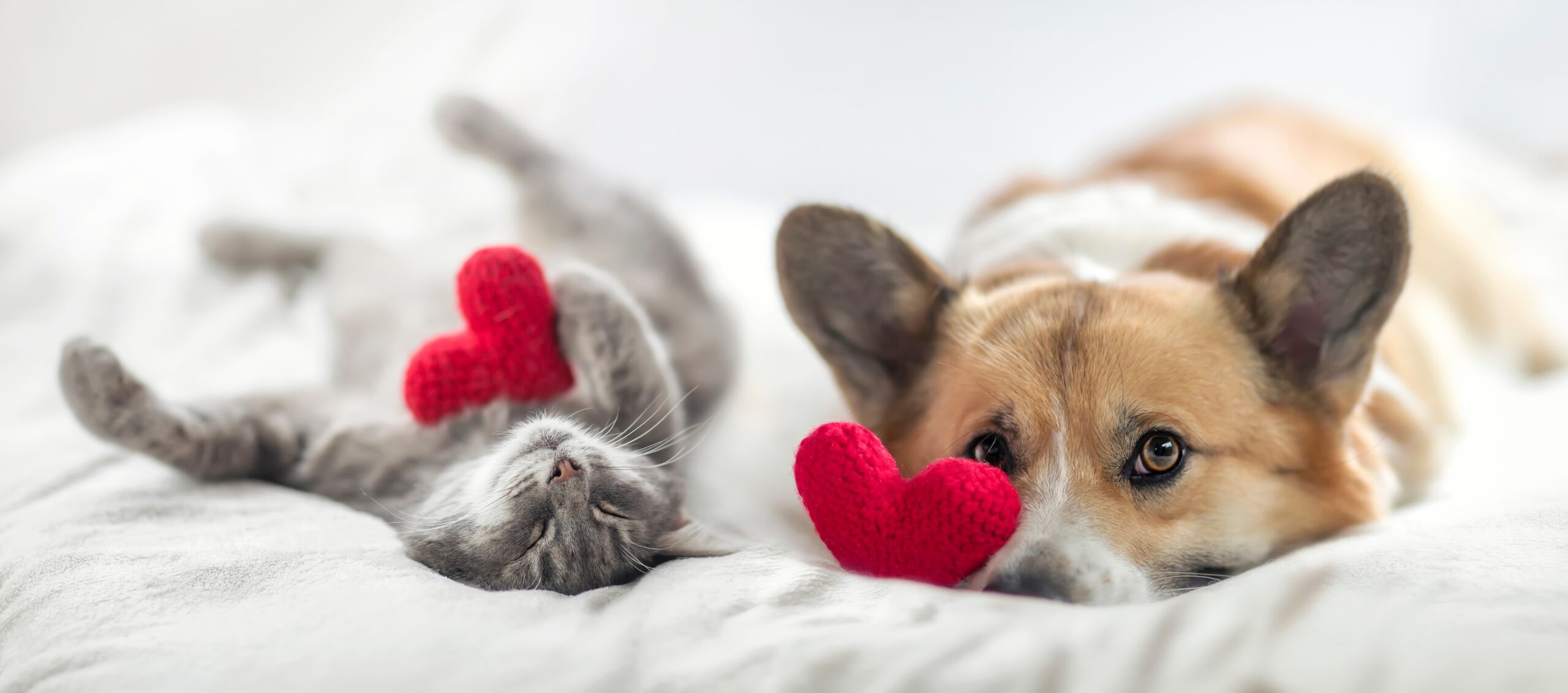Cats and dogs living together can be a harmonious experience, especially when you choose the right breeds. While the stereotype may suggest these animals are forever at odds, certain cat breeds have an innate ability to coexist peacefully with dogs.
Understanding these breeds and their characteristics can lead to a joyful multi-pet household. Here, we explore cat breeds known for their compatibility with canine companions, offering insights into each breed’s temperament and lifestyle needs.
1. Maine Coon
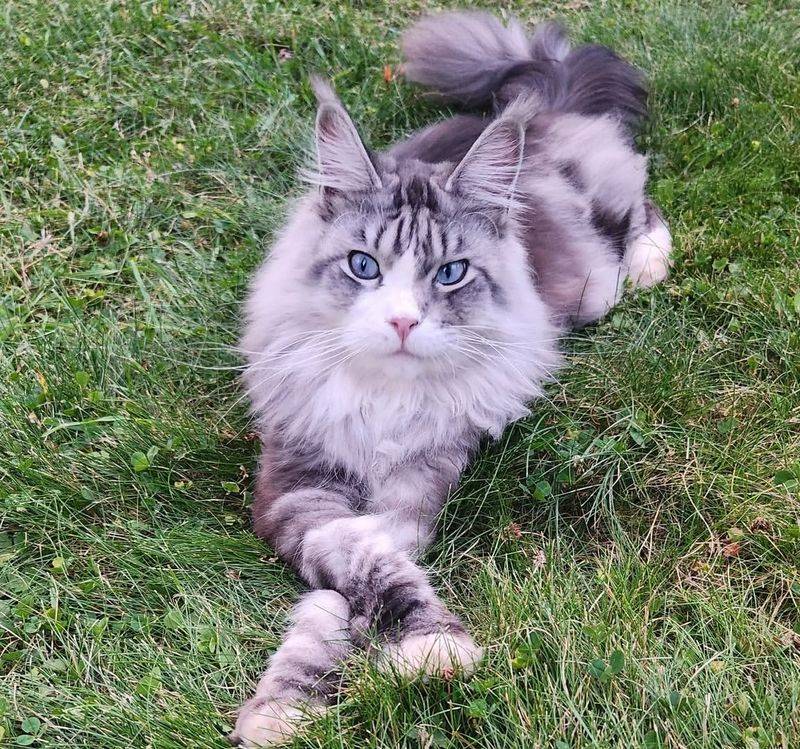
The Maine Coon is not only one of the largest domesticated cat breeds but also one of the most affectionate. Known for their dog-like characteristics, these gentle giants enjoy the company of both humans and dogs. Their sociable nature makes them ideal for families seeking a pet that can mingle effortlessly with canines.
These kitties are playful and intelligent, often engaging in games that dogs enjoy too. This adaptability to various play styles helps them bond with dogs over shared activities. They do well in environments where they receive ample attention and interaction from both humans and other pets.
Their easy-going demeanor allows them to handle the boisterous energy of dogs calmly. It’s crucial, however, to introduce them properly to ensure a smooth relationship. By fostering positive interactions early on, Maine Coons can become the perfect feline companions for dog-friendly homes. There are challenges when it comes to owning them, but nothing some cat-doggo love can’t fix.
2. Ragdoll
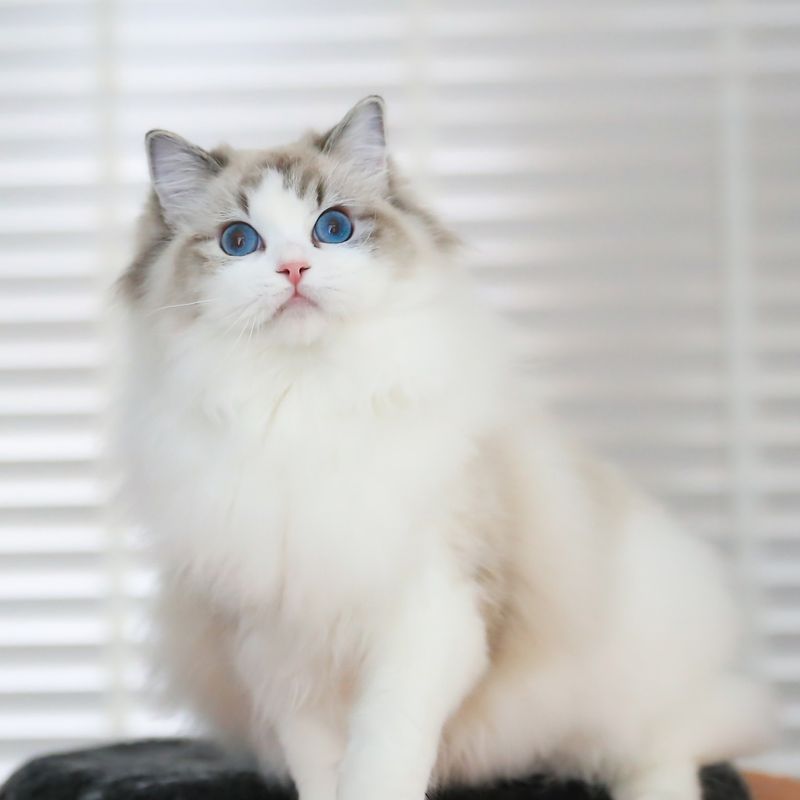
Ragdolls are well-known for their docile and laid-back nature, making them excellent companions for dogs. This breed tends to form strong bonds with their human families and canine friends alike, often following them around the house in a charmingly affectionate manner.
Their calm temperament allows them to adapt to the lively presence of a dog without feeling threatened or stressed. Ragdolls enjoy gentle play and can often be seen lounging peacefully next to their furry companions.
This mutual respect between species helps foster a harmonious living environment. Moreover, Ragdolls are highly tolerant, making them suitable for homes where dogs are a bit more excitable. Ensuring a controlled and gradual introduction can help maintain peace and strengthen the bond between the pets.
Over time, Ragdolls can become an integral part of a dog-loving household, treasured for their gentle companionship.
3. Siberian
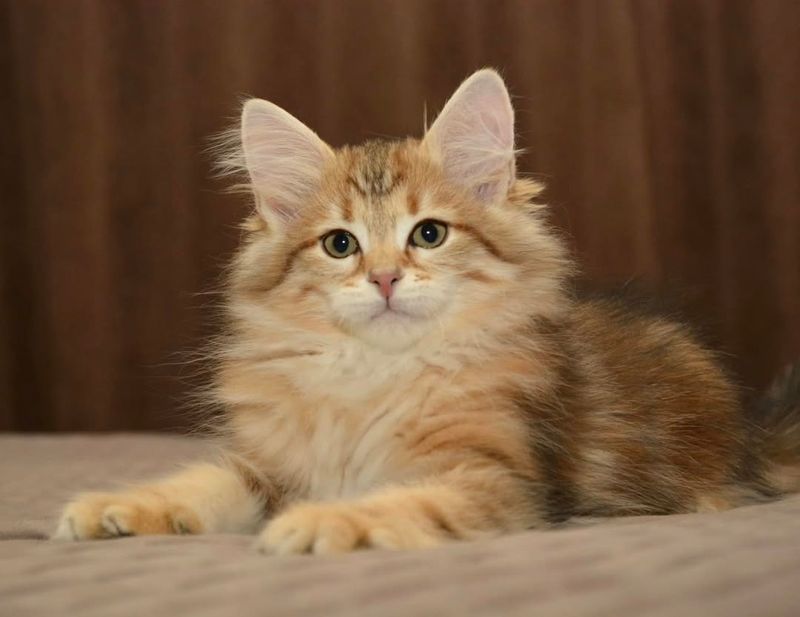
A robust and friendly breed! These traits contribute to their compatibility with dogs. This natural disposition towards sociability makes them well-suited for multi-pet homes. They possess a playful energy that mirrors that of many dog breeds, creating opportunities for shared play and companionship.
Their fearless nature allows Siberians to interact with dogs without intimidation, enabling them to establish a respectful relationship. These cats are also known for their intelligence and curiosity, often getting along well with clever dog breeds that appreciate mental stimulation.
Introducing a Siberian to a dog should be done gradually to ensure mutual comfort and understanding. Once acclimated, Siberians can thrive alongside dogs, adding a playful dynamic to the household. Their presence tends to complement the energetic vibe of dogs, making for a lively and balanced pet environment.
4. Birman
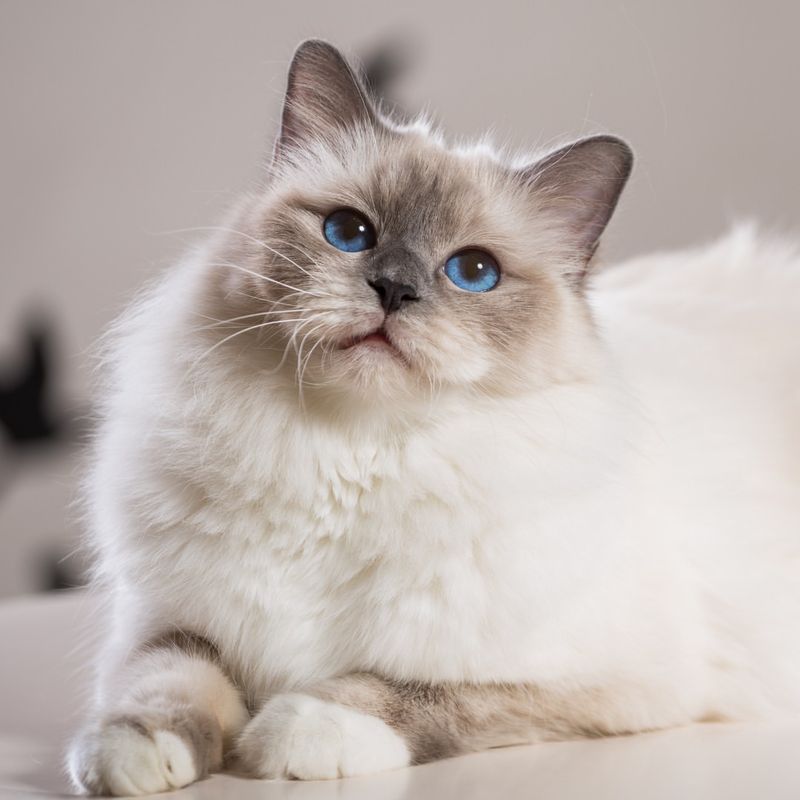
These affectionate cats enjoy being part of family activities, often joining in on the fun with their canine companions. Their friendly demeanor ensures they interact well with dogs, creating a sense of camaraderie.
Birmans are not easily startled, which helps them remain composed around energetic dogs. This calmness is key to establishing a peaceful coexistence in the home. Moreover, Birmans are highly adaptable, which enables them to adjust to the presence of a dog over time.
With proper introduction and positive reinforcement, these cats can develop strong bonds with their dog counterparts. In households where laughter and activity are constant, Birmans fit right in, providing affectionate companionship to both humans and dogs alike.
5. Norwegian Forest Cat
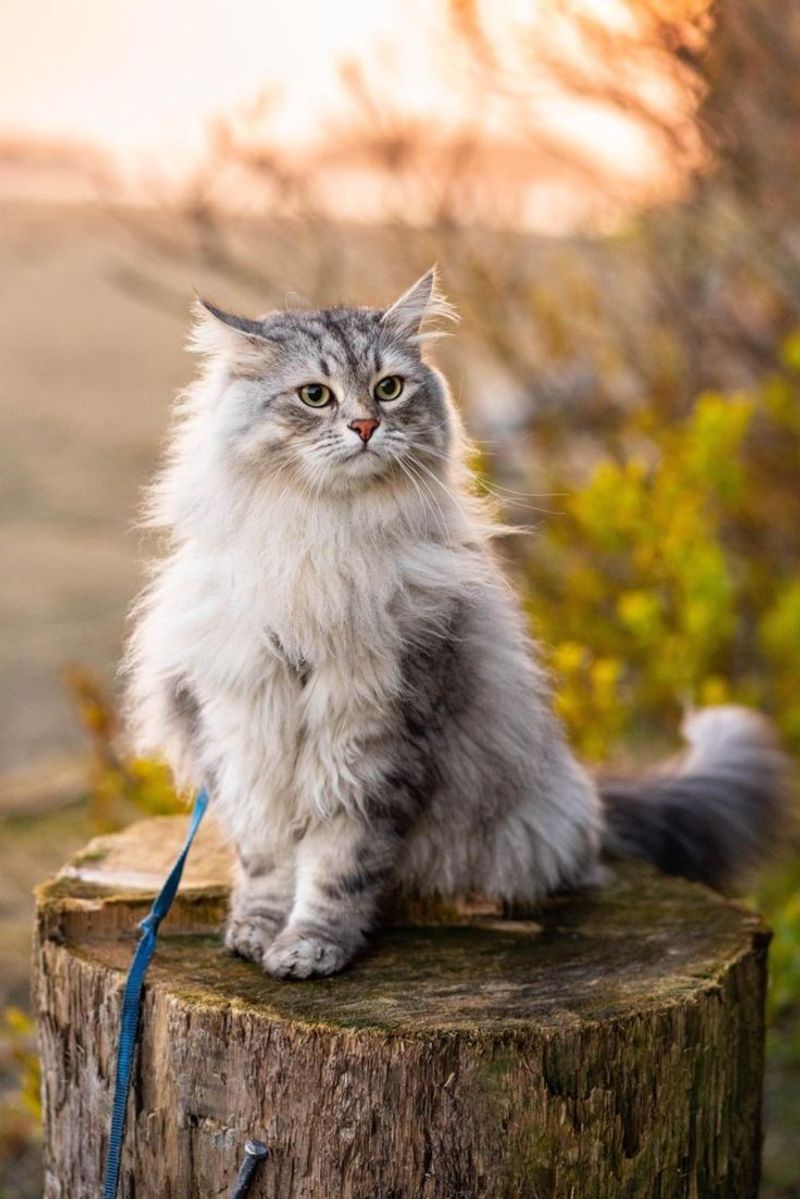
The Norwegian Forest Cat is renowned for its independent yet sociable nature, making it a delightful companion for dog-friendly homes. These cats are not only striking in appearance but also possess a charm that endears them to dogs and humans alike.
Their adventurous spirit allows them to engage in playful activities with dogs, often leading to shared adventures around the home. While they enjoy their independence, they are also known to seek companionship, making them perfect for multi-pet households.
Introducing them to dogs should be a gradual process, allowing time for both pets to adjust to each other’s presence. Once comfortable, Norwegian Forest Cats often develop strong attachments with their canine companions, creating a harmonious living environment. Their presence brings a sense of calmness and balance, enhancing the social dynamics of the household.
6. Abyssinian
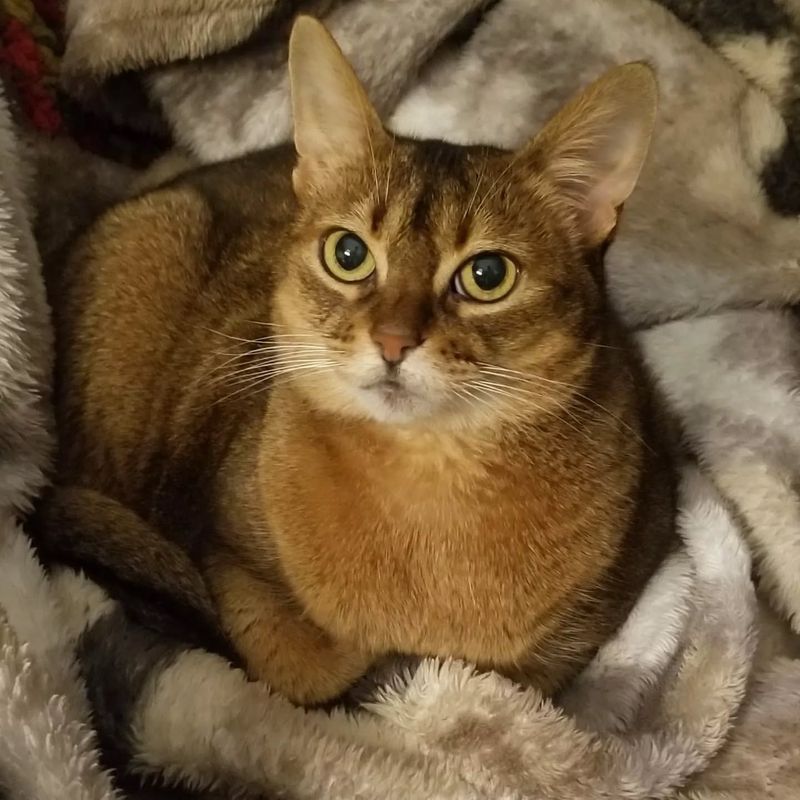
These beauties are active and curious cats known for their playful nature, making them great companions for dogs. These cats are often described as dog-like themselves due to their love for interactive play and social interaction.
Their high energy levels align well with many dog breeds, leading to shared play sessions and mutual enjoyment. Abyssinians appreciate environments that offer stimulation and engagement, where they can explore and interact with their canine friends. Introducing an Abyssinian to a dog requires patience and gradual exposure to ensure a positive experience.
Over time, these cats can form strong bonds with dogs, enjoying the companionship and lively atmosphere they bring. In homes where activity and engagement are abundant, Abyssinians thrive, offering vibrant energy and companionship to both dogs and humans.
7. Tonkinese
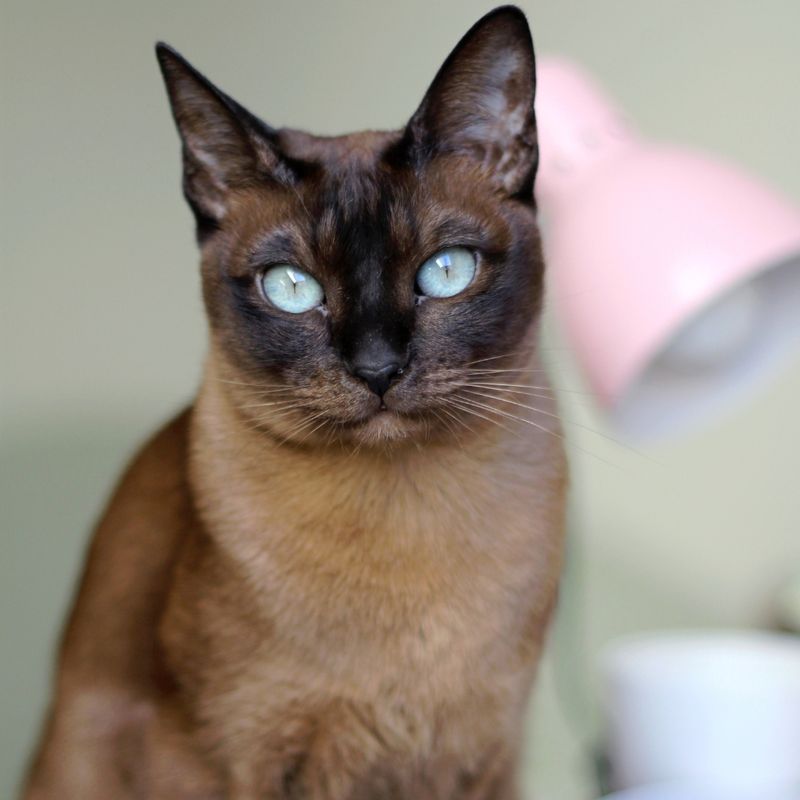
These cats enjoy being the center of attention and thrive in busy households where interaction is frequent. Tonkinese cats often form close bonds with dogs, engaging in playful antics and sharing spaces without issue.
Their adaptable and easy-going nature makes them well-suited for living with canine companions. Proper introductions are essential to ensure a smooth transition when bringing a Tonkinese into a home with dogs.
With patience and positive reinforcement, these cats quickly adjust and often become inseparable from their dog friends. The companionship they provide is cherished, adding warmth and joy to any household they join. Their presence is like a unifying force, bringing together different species in harmony.
8. Oriental Shorthair
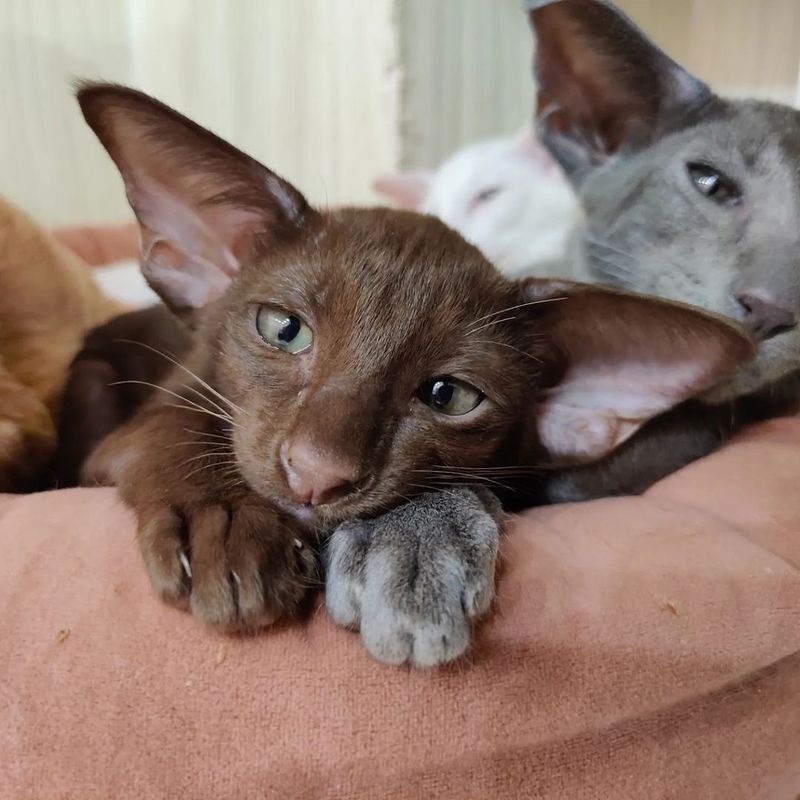
Oriental Shorthairs are known for their intelligence and social behavior, traits that help them get along well with dogs. These cats enjoy being part of a family dynamic and often seek out the company of other pets.
Their playful nature and curiosity make them engaging companions, often participating in games and activities that include dogs. Oriental Shorthairs thrive in environments where they can interact and bond with their canine housemates.
It’s important to introduce them slowly to dogs to ensure a mutual understanding and comfort level is achieved. Once they get accustomed to each other’s presence, Oriental Shorthairs often develop a harmonious relationship with dogs.
Their lively and affectionate demeanor adds to the richness of a home, making them a beloved addition to families with dogs. They bridge the gap between cats and dogs, fostering friendship and companionship.
9. Bengal
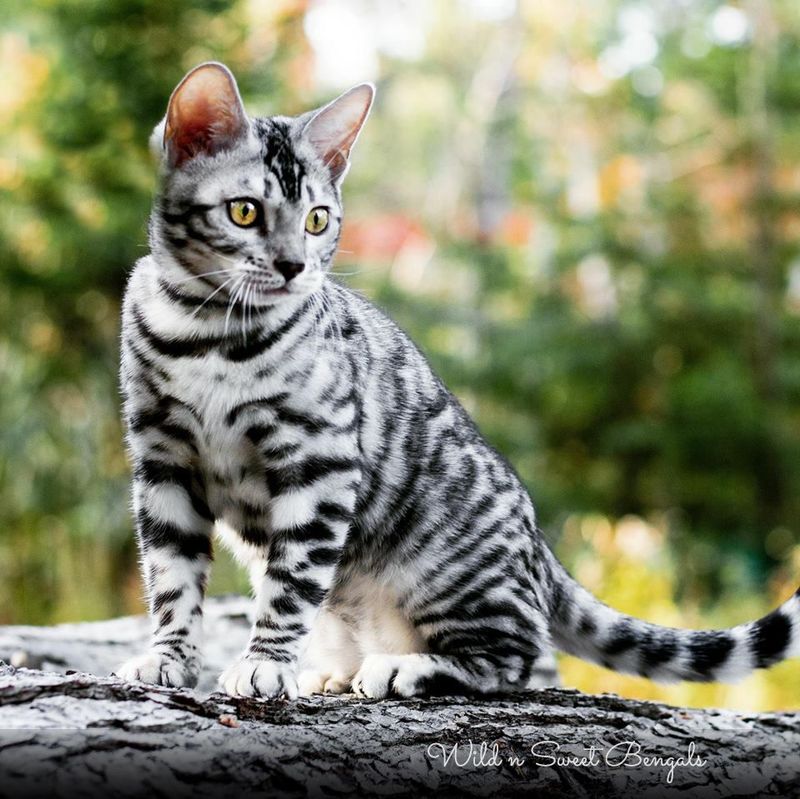
Known for their playful and adventurous spirit, Bengals engage actively with canine companions, often forming dynamic duos that enjoy exploring and playing together. Their bold personality enables them to interact confidently with dogs, contributing to a balanced pet environment.
Bengals require stimulation and thrive in homes that offer them plenty of opportunities for engagement and activity. Introducing Bengals to dogs should be managed carefully to nurture a positive relationship.
With time and patience, these cats can develop strong bonds with dogs, enjoying the social and lively atmosphere they bring. Bengals add a unique charm to multi-pet households, enhancing the energy and enjoyment for everyone involved.
Their vibrant presence complements the playful nature of dogs, creating a household filled with adventure and fun.

